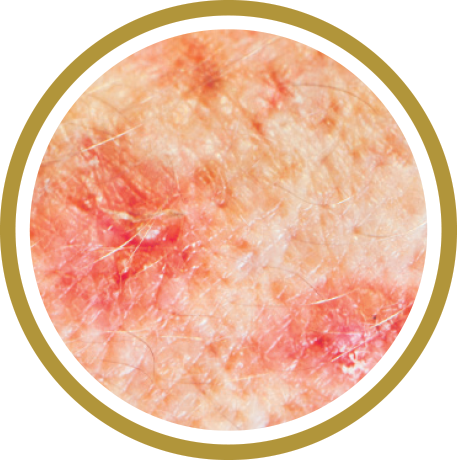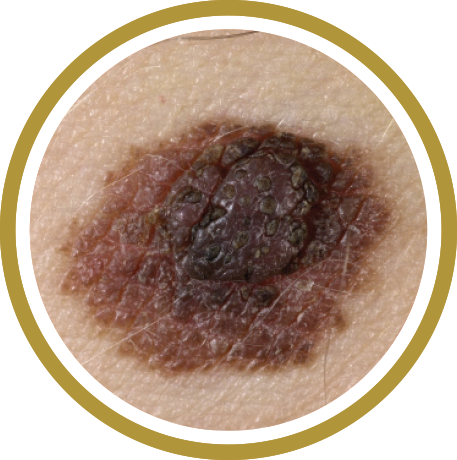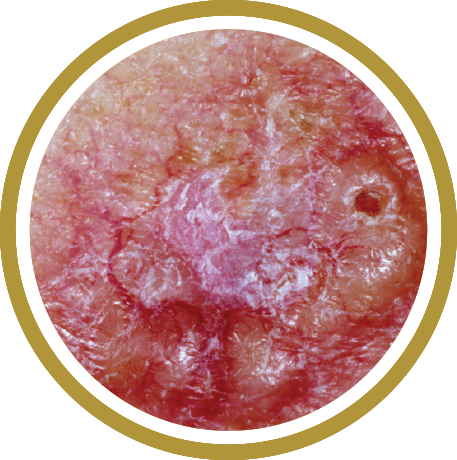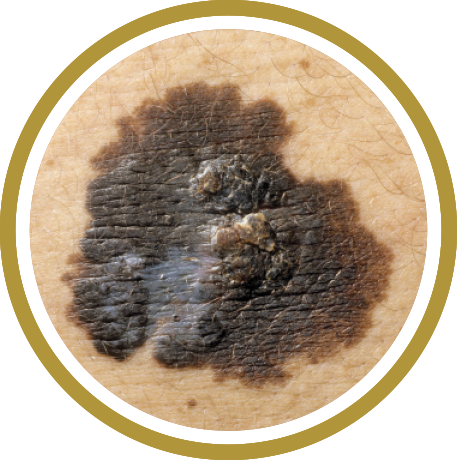Squamous Cell Carcinoma
Squamous cell carcinoma is a major type of cancer that affects the outer layer of the skin (epidermis), as well as in the tissues that line airways and some internal organs (mucous membranes). When completely treated, the cure rate is greater than 95%.Appearance
Squamous cell carcinoma occurs most frequently on sun-exposed regions of the body, such as the face, lips, ears, neck, scalp, forearms, and backs of hands. Signs that may indicate squamous cell carcinoma include scaly red patches, elevated growth with a central indent, wart-like growths, nodules, and open sores. All of these types of lesions may develop a crusted surface or bleed.Check for spots that meet one or more of the ABCDE guidelines of melanoma. Those are:
- Asymmetry
- Border irregularity
- Color variability
- Diameter of 6mm or more
- Evolution or change in appearance or an appearance different from other moles
Learn how to examine your skin
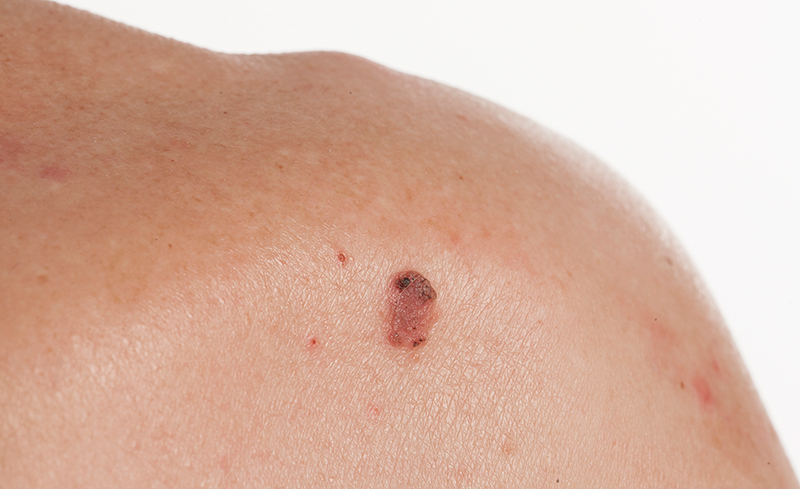
Risk factors of squamous cell carcinoma
Chronic exposure to sunlight is the leading cause of squamous cell carcinoma, especially in people with fair skin, light hair, and blue, green, or grey eyes. Other contributing factors include burns, scars, exposure to radiation or chemicals, chronic inflammatory conditions, and immunosuppression.Squamous cell carcinoma may also occur in dark-skinned people, especially at sites of preexisting inflammatory conditions or burns.


